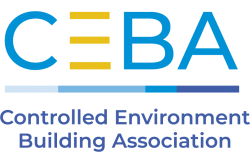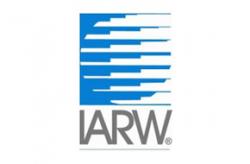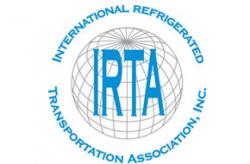Connecting Rail and Ship in Oakland
Fisher Construction Group finds success with Lineage Logistics Cool Port design/build.
Lineage Logistics Cool Port in Oakland, California, United States, is a new temperature-controlled transload distribution facility that is a cornerstone project of an economic revitalization plan developed by a public-private partnership between Lineage Logistics, cold storage operator Dreisbach Enterprises and the Port of Oakland.
Fisher Construction Group was hired to design and build the mammoth $70 million property on 22 acres. The 276,000-square-foot facility bridges the gap between rail and ship and provides a greatly needed cold storage and transfer hub for importing and exporting protein products between the United States and Pacific Rim nations. Lineage Logistics Cool Port is projected to handle approximately 9,000 rail cars per year and an additional 9,000 containers by truck, transferring up to 1,000,000 tons of perishable product through the Port of Oakland annually.
Ryan Smith, Senior Project Manager for Fisher Construction Group, noted the company became involved in the project when the Port of Oakland issued a request for proposal, and Fisher was selected to team with the Cool Port Group (comprised of Lineage Logistics and Dreisbach Enterprises) as its builder. Being the first public/private partnership project for the Port of Oakland, Fisher’s project management team navigated many “firsts” for the port. Cool Port’s ownership group trusted Fisher’s management team to navigate and advise them through the process. “Time and budget were the two biggest driving factors,” Smith explains.
“Because of reasons to do with the lease, the facility had to be operational by November 2018 – regardless of whether it was working or not, they were going to start being charged rent.” In addition, there was a concurrent federally funded project to get rail lines in place, and Fisher needed to meet certain milestones and dates to allow that rail service project to be installed. “There’s also a lot of public involvement working in the Port of Oakland,” Smith says. “The Maritime Aviation Port Labor Agreement requires using local unions, so we could hire from five zip codes in the Oakland area. Fisher hired a person to specifically administer the requirements.” Once port staff reviewed and endorsed the project, the port’s commissioners still needed to provide final approval of the entirety of the plan including utilities, grading, environmental, trucking haul routes and construction reviewed and approved.
Constructing the Cold Chain
The facility contains a 100,000-square-foot storage zone that represents about one third of the entire space. The rest is comprised of a uniquely winged refrigerated loading dock, allowing for product transloading in optimal conditions. Smith notes the 108 rail and truck doors in the refrigerated cross-dock were designed with a complex set of interlocks to help maintain the cold chain. “The rail doors remain locked until the trains are completely aligned with the inflatable dock seals and adjustable rail levelers are in place,” Smith says. “The interlocking system allows rail cars to be aligned four-deep with passage bridges fitted between cars. Loads are transloaded to trucks using specially designed truck levelers enabling the trucks to be fully loaded with product via handling trucks, without the need to hand-load the last stack in the area that a conventional loading dock would typically occupy.”
Overcoming Challenges
Smith notes jurisdiction issues were the largest challenges the crew faced as working in California, in Oakland specifically and at the port, all had unique issues. Overall, there were about 20 different agencies from which Fisher needed approval. On the construction side, horrible soils were the problem. As the site was once an army base located on the tidelands of Oakland Bay, it presented some challenges to Smith and his team. For one, there were unknown sunken hazards and potential contamination in the already soupy tide flats. Smith explained the poor soils required the facility to be built on 1,800 concrete piles driven 50 feet down to counteract settling and seismic activity, bracing the building’s slab foundation. “If there ever was a seismic event, it was estimated the ground underneath could slip away up to two feet,” Smith points out. “We had to design with that in mind, so we built it almost like a bridge deck sitting on top of piers and it’s all a structural slab.” That required all utilities coming in to have big joints and flexible connections and all underground utilities (electrical, plumbing) had to be set in concrete with hangers.
Additionally, the land is heavily regulated by the California Department of Toxic Substance Control due to the possibility of ground contamination so specific site permits and approval was required by the DTSC to proceed with the work, such as obtaining groundwater permits for the discharge of construction dewatering efforts from The East Bay Municipal Utility District. The Fisher team also created a hinge detail for the truck aprons so if the ground erodes, the top would still be connected to the building as the aprons would tilt in the event of settlement. Trucks would have access to the docks via the use of this teeter-totter design counteracting settlement.
Notable Innovation
The Cool Port project adopted a locally driven strategy when devising its long-term international solution and its localized strategy was woven into every aspect of the enterprise. The success of the Lineage Logistics Cool Port project required significant innovation long before the first excavator arrived onsite and throughout the project’s entire designbuild process. Smith notes that innovation is evident in the way the company future-proofed the methane-pocketed and seismic-prone land to a suitable building foundation; how it devised on-demand market adaptability in the form of interchangeable frozen and chilled storage spaces; and how it maximized end-to-end cold chain efficiencies within an intermodal system. “While the advantages of intermodal transport are well known, less well known is the need for continuous improvement of the cold chain itself,” he says. “Every link in the chain carries the risk of breaking the chain and risking safety, quality and value along the way.” The Cool Port design mitigated the likelihood of weak links by creating continuous cold chains capable of safeguarding all goods entering and exiting the building. “Neither loading nor unloading breaks the chain when utilizing inflatable rail dock shelters and internal setback dock pits with cold chain safeguards,” Smith says.
“Frozen or chilled, the process remains intact and cargo is never exposed to external temperatures.” Cool Port’s continuous cold chain intermodal transport facility is augmented by the structure’s innovative cold chain storage capabilities. The structure houses an 80,000-square-foot freezer in tandem with two 10,000-square-foot areas capable of storing goods with a temperature range of -10F to +35F. “Such convertible storage spaces accommodate the dynamic realities of market demand,” Smith says. “This innovation reduces the facility’s limitations, thus increasing its functionality in an evolving market.” Being a freezer and a cooler, Smith notes there is always a bigger demand for water. Originally faced with a $2 million connection price, Fisher was able to negotiate to get it down to a manageable cost. That was a battle that took six months, Smith adds.
Sustainable Efforts
The design, construction, and operations of Cool Port met all of CALGreen’s codes – the statewide standard for reducing the environmental impact of construction by minimizing waste and setting a high standard of energy efficiency for new buildings. “The building is certainly very efficient thermally,” Smith says. “We used all the latest technologies for the thermal envelope.” The whole building is also solar-ready if solar was to become available. There are dedicated dead loads for solar panels on the building, extra room in the electrical gear, and extra conduits for other solar provisions. Smith notes that given cold storage facilities are intensive energy users, it was in everyone’s interest to increase the efficiency of the facility through smart use of materials and technologies. Therefore, the steel-supported 48-foot, 7-inch-tall cold storage facility is totally clad in energy efficient 6-inch IMP panels offering an R44 value, making it possible to maintain the freezer/convertible cooler with less than 2-degree fluctuation in energy consumption. Similarly, the cross-loading docks are clad in 4-inch insulated metal panels.
The facility’s state-of-the-art industrial ammonia refrigeration system utilizes lowcharge direct expansion for all cooling loads, which significantly reduces the ammonia charge required on site. It provides additional benefits including the elimination of recirculation pumps, effective operation at multiple temperature levels, reduced defrost times and frequency, excellent response to changes in load, fast restart after a power failure, and simplified maintenance and operation. Propylene glycol, circulating through compressor oil coolers, provides the heat for sub-floor warming under the storage areas, preventing ground frost formation. Meanwhile, Cool Port’s control system manages all room temperatures and defrost cycles, providing a floating suction and discharge pressures that maximize electrical efficiency.
Final Thoughts
At the conclusion of the build, a formerly brown site riddled with challenges was transformed into a continuous blue-sky operation. Just as important, both temporary and evergreen opportunities were introduced into an economically distressed community. “The Mayor of Oakland was at the grand opening, and multiple people in Congress came through, the Port commissioner was there, and everyone was happy with what they saw,” Smith says. “It’s a one-of-a-kind project. To have a facility where you can get fresh produce, meats and anything that needs to be refrigerated off a boat and put directly on to rail is unique.” Smith was pleased that the project met or exceeded all MAPLA goals as the first port/ public/private partnership in Oakland. He credits the joint effort from the beginning of the project as making it a smooth process for all involved. “We came away having a very successful project with all those parties,” he says. “It was a very clear goal and we designed what was needed and what they wanted. We were on time and on budget and had the facility running when we had to.” The project was a finalist in the CEBA Built by the Best Competition in 2020.
KEITH LORIA is an award-winning journalist who has been writing for major newspapers and magazines for close to 20 years, on topics as diverse as sports, business and technology.
EMAIL: freelancekeith@gmail.com
Source: Cold Facts May/June 2021 issue



